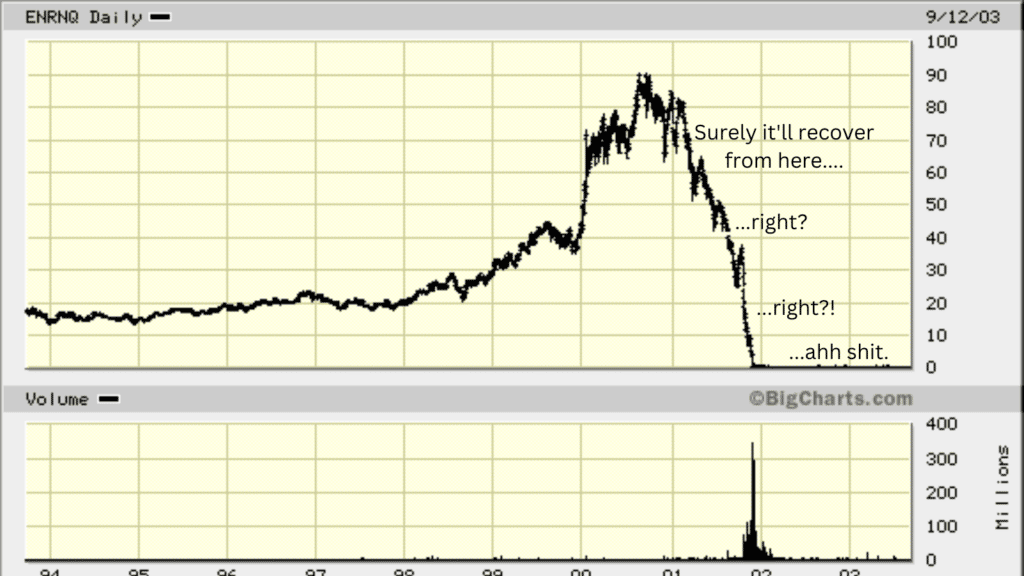We had a terrible start to our honeymoon. Bad luck and human incompetence torpedoed our first travel day. Naturally, I took it as an investing lesson.

Our itinerary was Rochester –> Boston –> Tokyo –> Hanoi. Then after a few days in Hanoi, onward to Chiang Mai, Bangkok, and other parts of Thailand.
But things went poorly from the start.
- Our plane in Rochester had a mechanical issue. 90 minute delay…
- A replacement plane got called up from Philadelphia. But it ran late. …another 60 minute delay
- Once onboard the replacement, we…just sat there! Why aren’t we moving?! 30 more minutes…
- The entire time, ground crew and staff assured us our connection in Boston was safe (“We’re watching carefully – you have plenty of time…”)
But we were nervous. Clocks don’t lie.
As the connecting flight to Japan pushed back from its Boston gate, our inbound flight from Rochester descended through the clouds. We had a 3-hour scheduled layover – time that all got consumed in Rochester before ever taking off. We missed the connection.
Boston to Tokyo is a once-per-day, 14-hour flight. We had no recourse but to wait for the next day’s flight. (We got lucky, in fact, to get seats on that second flight.)
Our carefully constructed honeymoon plans were far from ruined…but definitely shaken up. We lost the full first day in Vietman and had to cancel our Day #1 trip to Ninh Binh 🙁

But you investors can learn some valuable lessons from our frustrations.
Some Things Are Out of Your Control…
I’ve quoted Annie Duke before on The Best Interest.
Two things determine how your life will turn out: luck and the quality of your decisions.
Annie Duke

We didn’t choose to have our plane break down. We had no say in the replacement plane’s tardiness.
Bad luck happened.
Similarly, we never choose to watch our portfolios drop. It’s out of our control. All can only control our decisions – like what asset allocation to invest with. Ideally, one that captures enough upside reward to achieve our financial goals, but with a low enough risk profile to stomach the inevitable temporary losses.
Build In Margin…But Sometimes Margin Fails
Because bad luck happens, it’s imperative to build margin into your systems.
We had three hours of layover time in Boston built into our itinerary. More than enough…right?
Apparently not.
Personally, I don’t think the lesson here is: “Build more margin in.” Three hours should have been fine. 95% of the time, we would have “wasted” that margin idly in the Boston airport. Just like most of the time, you “waste” your insurance premiums by never using the insurance itself.
Instead, the lesson is: there’s always a scenario that could possibly test the limits of your margin.
The question for you to ponder is how to balance the “wasted margin” against the “possibility for disaster.” Zero margin is a bad option. But too much margin is wasteful.
Trying to Keep Your Cool (It’s Hard…)
My clients are nervous. Their portfolios are down 6- or 7-figures in 2022.
Don’t just stand there! Do something!
Their thoughts area completely justified and completely human. But part of investment education is to teach and remind them:
- “First – I hear you, I understand you. I get it, and you’re not alone. Let me offer some ideas to ponder, then let me know what you think.”
- We chose an asset allocation based on your goals, risk tolerance, and timelines. Have those changed? Your financial plan dictates your investment choices – not the other way around.
- Changing asset allocation based on recent performance is, as history shows us, challenging, short-sighted, and usually regrettable.
- Your portfolio worked wonderfully over the past 10 years. Markets work in cycles.
- Yes, 2022 is uniquely bad. But…
- But the forward outlook is…good! P/E ratios are down, a harbinger of strong forward stock returns. Interest rates are up, a sign of strong forward bond returns.
Right now is not the time to abandon ship. The exact opposite, in fact.
The airplane parallel isn’t perfect. But there are similiarites.
My wife and I were frustrated. We saw our problems growing worse and it felt like nobody cared as much as we did. But no matter our stress, our frustration, our apathy…
- We couldn’t fix the plane in Rochester.
- We couldn’t fly the replacement from Philly.
- We couldn’t ask the pilots on the tarmac to just go already!
- We couldn’t ask the Tokyo-bound plane to wait for us.
Our negative emotions served no productive purpose. Our feelings were perfectly understandable, perfectly human. But not helpful.

Bad Things Happen…But They Can Get Worse
There’s an old joke in investing circles:
Q: How does a stock drop 90%?
A: It drops 80%. Then it gets cut in half.
In other words, one bad thing happening (an 80% drop) doesn’t preclude more bad things from happening (another 50% drop).
Previous bad luck doesn’t mean you’re “due” for good luck. And vice versa. It’s the same logical fallacy leading to results-oriented thinking. Recall the Annie Duke quote from earlier: you can’t control your luck!
We had three consecutive “bad lucks” eat away our entire layover margin.
Investing – at least in the short run, looking at individual assets – can work similarly. The used car company Carvana, for example, has suffered setback after setback in the past 12 months. Its stock has plummeted. There’s no silver lining waiting behind all the bad news. Just more bad news.
Just look at Enron’s stock price from 1994 to 2002, below:

And Those Bad Things Compound…
In our traveling, three minor setbacks compounded into a 24-hour delay.
In investing, bad results can compound into permenent and/or complete loss of capital.
Incentives Drive Behavior
I know nobody acted maliciously against us. That said, I learned an important lesson from the ground staff who assured us we’d make our connection.
Q: What’s the easiest way to make a problem go away?
A: Convince those concerned that the problem doesn’t exist at all.
Hindsight being 20/20, I think the ground crew shoulda/coulda/woulda looked into re-routing us or, if need be, telling us the cold hard truth: we weren’t going to make our connection, and our best bet would be to go home and try the next day.
Instead, they smiled and nodded and sent us onward to Boston. “You’ll be fine – plenty of time, I’m looking at it right here on my terminal.” They made us believe that the problem didn’t exist.
Why? At least in part, because that crew had no incentive of accountability from us, the passengers. Once we’re onto the next city, we’re no longer their problem.
And so we became a big problem to the poor ground crew in Boston. They spent an hour with us:
- Looking for the best/fastest/easiest way to get us to Hanoi
- Securing a hotel room for us
- Setting us up with food vouchers, transport vouchers, etc.
The Boston crew had to clean up after the Rochester crew. And you better believe some part of the Boston crew’s heads thought, “We didn’t create this mess. Why do we need to bend over backwards to help?”
Incentives drive behavior.

Ultimately, our trouble was a first-world problem. Our 18-day trip is now only 17. Oh no!
But the helplessness of air travel is a great reminder for how investors should act. Make the best decisions you can, use margin to shield yourself from bad luck…and then cross your fingers!
Thank you for reading! If you enjoyed this article, join 8000+ subscribers who read my 2-minute weekly email, where I send you links to the smartest financial content I find online every week.
-Jesse
Want to learn more about The Best Interest’s back story? Read here.
Looking for a great personal finance book, podcast, or other recommendation? Check out my favorites.
Was this post worth sharing? Click the buttons below to share!